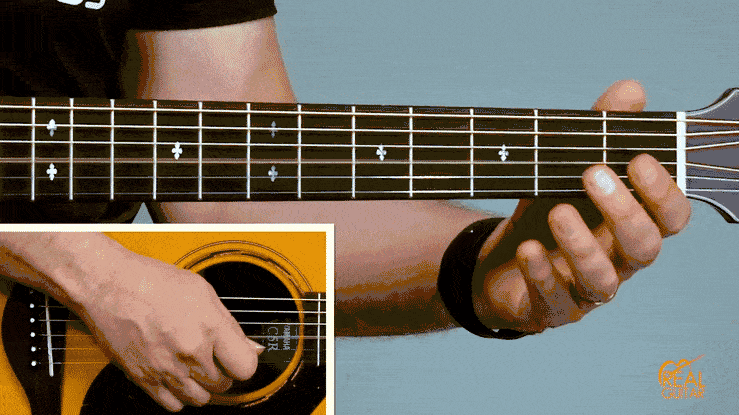How To Train Your Ears For Guitar - Effective and Fun!
Learning how to train your ears for guitar is very important. When I first started, I’d listen to records on vinyl to learn how to play them. I would spend hours on this, lifting up the dial and trying to place it back to the beginning of the section I was attempting to learn, over and over again.
This was very useful ear training, but it was brutal.
Ear training is crucial, but I did not want to put my students through that kind of process. One day I walked through one of the classrooms at my music school. I noticed the teacher was teaching ear training to a group of five year old students.
She was using a process called “by copy play”, part of the Yamaha education system for young children. She played a phrase at the keyboard and the students would sing it back to her, eventually building up to longer melodies.
The students were having a great time and saw it as a fun game. I realized then that there was something in this method that I could apply with my own students.

Why should you learn ear training?
This is an important question to answer. Ear training does take time and effort, and you don’t see the results as fast as when learning a song and have something to show for.
The short answer is because the overall benefits are tremendous. Training your ears will make you a much better overall musician. It will make it easier to learn new music, whether you have written music notation at hand or not.
Additionally, it will allow you to play more accurately and you’d be able to tell quickly when something does not sound right. It makes it more fun to learn music, as you’d be better prepared to identify details in a quicker and easier way.
Most importantly, ear training will give you confidence to know what sounds good for you. This turns into an incredible freedom, as you won’t have to worry about playing by the rules or playing only what’s written on paper.
As a side benefit, it also becomes more enjoyable to listen to music as you become more aware of all the rich details.

By copy method
This method is the best way to train your ear for guitar that I’ve found. It works best with a guitar in your hands and with the video that matches this particular lesson.
The way it works is that I’ll say “listen” and then I’ll play a short phrase to a beat. Then I’ll say play and you’ll play it back.
We’re only going to be using notes from the second and third string, so you don’t have to worry about searching for the notes at any other strings. Furthermore, we’re only going to be using notes from the C major scale.
In other words, the only notes we’ll be using is G on the open 3rd string, A (second finger on second fret, third string), B (open second string), C, (first finger on first fret, second string), and D (third finger on second string, third fret). You might want to practice those in that order to get a feel for it.
In the video of this lesson, you’ll find a section with several exercises.
As described above, I’ll play the exercises and then you’ll try to match them once I say “play it”.
Conclusion
Try to have fun with this. Any effort you put in is going to help your ability to hear a note and connect that with your fingers. Try not to take it too seriously and enjoy the process.
If you have any ear training exercises for guitar that work for you, please feel free to share them with us in the comment section.
Be sure to check out my YouTube Channel for more guitar learning tips, lessons, Q&A and more!



